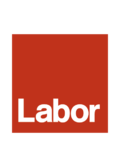South Australian state election, 1993
|
|
||||||||||||||||||||||||||||||||||
|---|---|---|---|---|---|---|---|---|---|---|---|---|---|---|---|---|---|---|---|---|---|---|---|---|---|---|---|---|---|---|---|---|---|---|
|
||||||||||||||||||||||||||||||||||
|
All 47 seats in the South Australian House of Assembly 24 seats were needed for a majority 11 (of the 22) seats in the South Australian Legislative Council |
||||||||||||||||||||||||||||||||||
|
||||||||||||||||||||||||||||||||||
|
||||||||||||||||||||||||||||||||||
State elections were held in South Australia on 11 December 1993. All 47 seats in the South Australian House of Assembly were up for election. The incumbent Australian Labor Party led by Premier of South Australia Lynn Arnold was defeated by the Liberal Party of Australia led by Leader of the Opposition Dean Brown. The Liberals won what is still the largest majority government in South Australian history.
The campaign was dominated by the issue of the collapse of the State Bank of South Australia in 1992. The State Bank's deposits were legally underwritten by the Government of South Australia, putting South Australia into billions of dollars of debt. Labor premier John Bannon had resigned over the issue, being replaced by Lynn Arnold just over a year before the election. Following the leadership change and by early 1993, Newspoll had recorded a total rise of 13 percent in the Labor primary vote. However, the gains did not last. A warning sign of things to come came with the March 1993 federal election, which saw two of Labor's longest-held seats in South Australia, Hindmarsh and Grey, fall to the Liberals. Hindmarsh had been in Labor hands without interruption since 1919, while Grey had been in Labor hands for all but one term since 1943.
...
Wikipedia


